China showing the way with Auto Shows
With the 2023 Japan, Guangzhou, Munich and LA motor shows all just behind us, we unpack 4 very different regional approaches and how China has the mid-twenty-first century show format that works best.
The past quarter has seen a slew of new production and concept car debuts at major auto shows that straddle the four most significant regions for the automotive industry. The Munich Auto Show in early September, the Japan Mobility Show (previously the Tokyo Motor Show) that ran from late October into November, and both Auto Guangzhou and LA Auto Show that ran during the middle of November.
The biannual IAA Munich followed the first ever held here in 2021 to be the pre-eminent European Auto show, and very distinct in its hybrid pop-ups-in-the-city and smaller scale trade-fair format. IAA (formerly held in Frankfurt) has been losing visitors since 2015 (Dieselgate) - a decade ago IAA would welcome over 1 million visitors - Munich 2023 attracted ‘over 500,000’ visitors across five days.
The inaugural ‘Japan Mobility Show’ had 475 exhibitors and attracted 1,112,000 visitors, down from 1.3 million in 2019 but up on 770,000 in 2017. The Auto Guangzhou had 1132 cars on display, 469 (~41%) were New Energy Vehicles (NEVs), only 119 from foreign brands and there were 59 global production debuts and 20 concept cars unveiled. The LA Auto Show had just 5 global debuts (compared with 9 in 2021 and over 20 in 2019), and lost the Stellantis brand stable after a last minute pull out citing costs of the UAW strike.
Take aways
Munich
Extending the format it established in 2021 with a hybrid of city-centre (and my, what a pretty city Munich is…) based pop-up stands of varying scale from many brands, and with a smaller trade-show style show hall element centred on suppliers running in parallel. So Munich is either transitioning from traditional auto show format to fully ‘pop-up’ or set to ride two horses going forwards — but still evidences a fresh take with the best city-centre stands both artfully being able to breath more fully as they express brand and create accessible customer-centric experiences. Fundamentally the show smashes together an approachable informality unlike any traditional car show (Goodwood FOS excepted) with rich brand experiences.
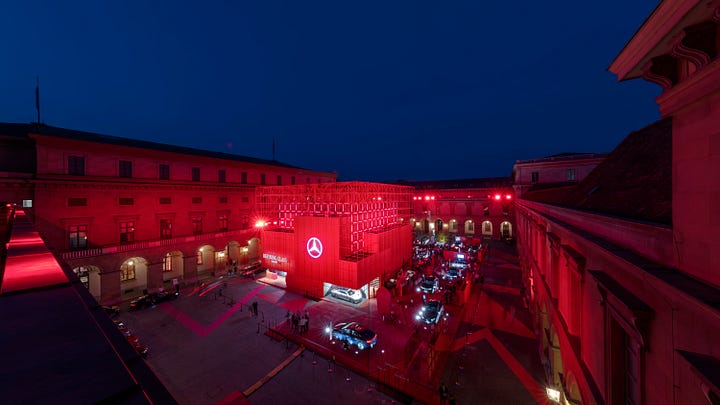
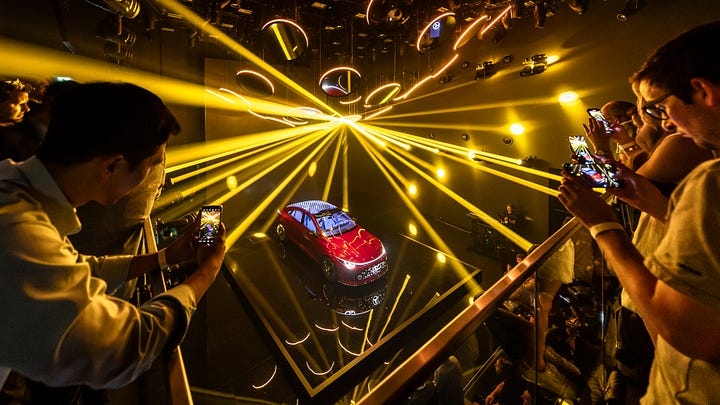
LA continue to bury its head in the sand
LA seems to continue to bury its head in the sand by continuing its established show format as if oblivious to its own decline, the re-formatting of other shows, or the changing culture of car engagement in its own region. Where once the American public were enthralled to the car — new designs would often make mainstream media headlines, the symbolism and utility of the car was widely celebrated in the mid-twentieth century culture of the region — today they are far less so (much unlike in China). Yet the size of the Californian economy, its still vibrant car culture now much centred on numerous outdoor non-race centric events from cars-and-coffee events to Pebble Beach, its famous NEV brand (Tesla, Lucid, Rivian, Fisker) residents, and the proliferation of international brands with design studios in the region, evidence a deep and broad potential for the LA show to step-up.
Subtle shifts in priority made the Japanese more accessible
Beyond a name change from ‘Motor’ to ‘Mobility’ the 2023 show differed with a focus on electric cars (Japan has been markedly slower than other regions to embrace electric) and on emotional concept designs that spoke of the joy of driving and fun, that were evidently designed to be stimulating to engage with for their show audience, perhaps something that Japan has alway uniquely done. And beyond the car exhibits, there was a dedicated mobility hall (the show had a total of over 500 exhibitors!) and the event was designed to be very accessible with none of the typical auto-show exclusive-access areas.
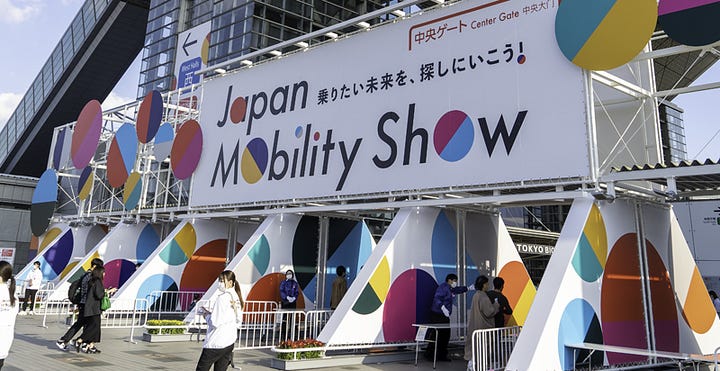
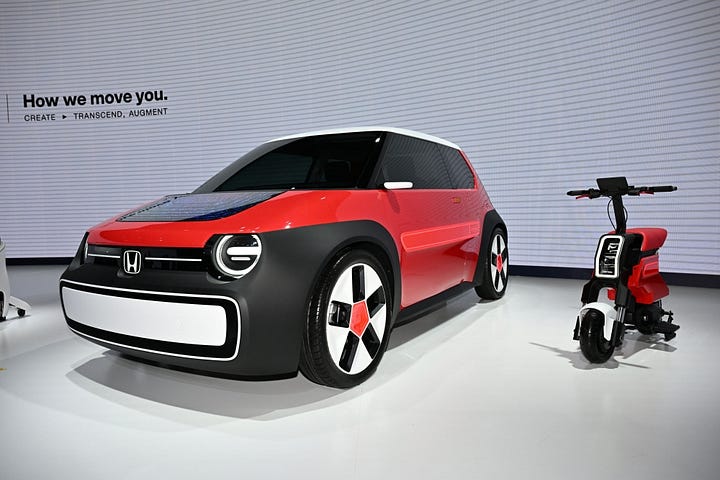

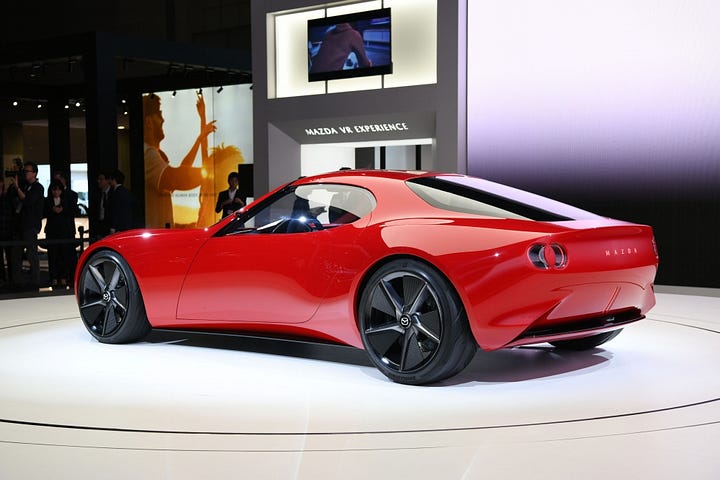
China showcases in-car tech to play straight to the heart of the local customer
Auto shows are more popular with the public in China than they are in the West — they are still a new and novel event in this young market. Chinese customers go to auto shows (or watch social media videos of their favourite ‘cewebrities’ visiting the show) to look at new designs they might want to purchase and experience the technologies on offer. And auto brands embrace this opportunity to demonstrate their latest technology and new designs — all Chinese NEV design debuts had full functioning HMIs so that customers can experience most elements of the digital user interface, the interior, and how these elements work together for them - much like visiting a consumer tech store.
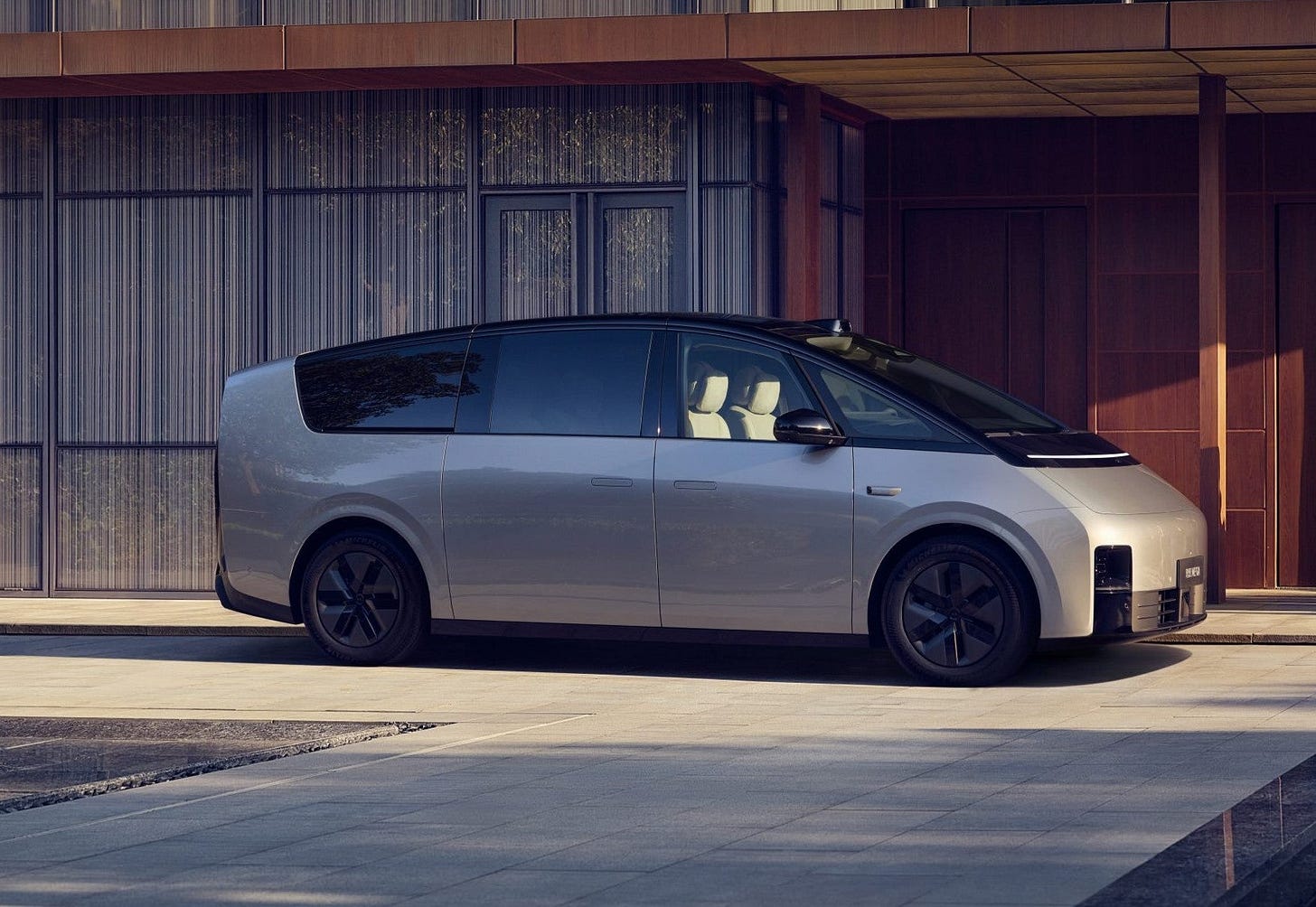
Whilst the show format itself has few unique ingredients, it provides a platform for car brands and customers to eagerly engage in-person / in the metal, and for Chinese brands to demonstrate their inherent customer centricity and ability to quickly respond to changes in the consumer preferences and market dynamics. And this is absolutely fundamentally different to western car shows where many vehicles are locked, most do not have fully active in-car UX, and where brands do not encourage this type of interaction with their cars — despite this being such a significant and unique opportunity for auto shows.
Summary
The traditional trade-show style auto-show that serves to enable brands to peacock their latest wears and stroke the egos of their c-suites has fast diminishing reach for western audiences. People today have a wealth of super-engaging cultural events to go to instead, are generally less engaged in ‘car’, and will easily inform themselves about new cars where they want or need to remotely. In China it is very different, for now — the car is still a new thing, the country is much inthrall to it, and both the sophistication and the speed of new innovations can only be fully appreciated in-person too — but regardless of this, their shows provide a uniquely valuable platform for person-to-car engagement. Learning from the success of facets of what Munich is pioneering with its informal accessibility and rich engagement, the way Japan is bringing so many other forms of mobility into an accessible and fun experience for visitors, and the super-accessible way China enables show visitors to fully engage with it high-tech new designs, might then form the basis for truly 21st century Mobility Show format that works for visits and brands alike.







